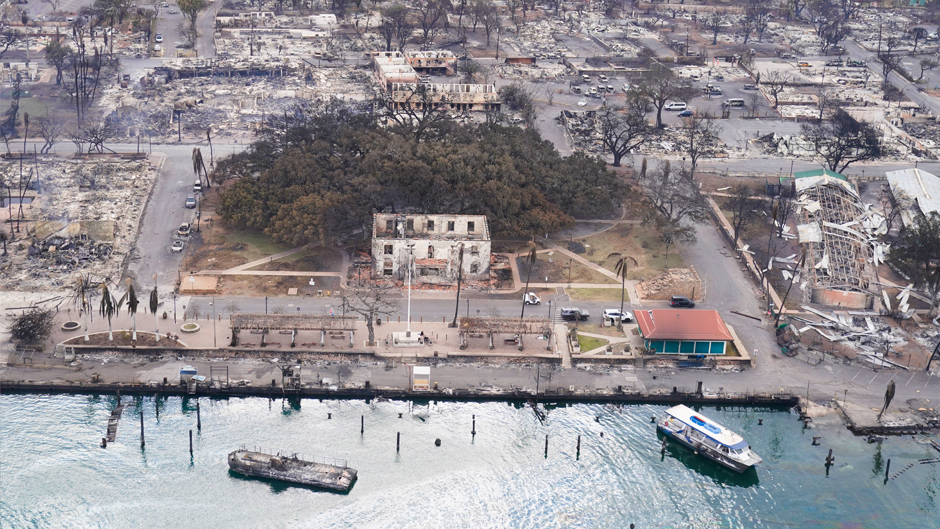Catastrophic wildfires on Maui and the Big Island in Hawaii have left nearly 100 people dead as of Monday, thousands homeless, and decimated the historic town of Lahaina. Six fires have been reported, resulting in one of the largest natural disasters to hit the islands.
Ben Kirtman, a professor of atmospheric sciences at the University of Miami Rosenstiel School of Marine, Atmospheric, and Earth Science and the William R. Middlethon III Endowed Chair of Earth Sciences, said a convergence of elements—including a distant hurricane in the Pacific Ocean—heightened fire risks and sparked the wildfires to fan across the islands.
Kirtman, whose research focuses on the variability and predictability of the Earth’s climate system by using atmosphere-ocean circulation models, shared his insights into how the disaster unfolded and what caused it.
How did the winds impact the fires in Hawaii?
With a fairly intense high-pressure system to the north of Hawaii, coupled with a low-pressure system caused by Hurricane Dora to the south, this big contrast in systems really drives the winds. Think of a balloon—when you push it in and begin applying a lot of pressure, the air comes flying out. That’s exactly what's happening in Hawaii. The systems worked together to drive the winds that fueled these fires across the island.
With Hurricane Dora moving east to west and further away from the Hawaiian Islands, the winds began to subside on Thursday. The high-pressure system to the north continues to sit there, but with the low-pressure system moving further west, the two systems are no longer working in sync to straddle the islands. So, the winds have diminished.
What types of tools are available that can warn us of this happening in the future?
What we can predict in the longer term—weeks, months, years out—is the fire risk. There are two elements that exacerbate the fire risk that are not wind related.
The first is, it has been excessively dry in what we think is a climate change signal. When it's excessively dry, the vegetation that's there dries out and becomes good kindling for a fire. The other thing is, the natural vegetation that’s usually found in most of Hawaii has changed. There are these guinea grasses that are growing that are non-native species. When past fires occurred and then were cleared out, usually the standard Hawaiian vegetation would grow. But this non-native species has taken over and are highly flammable. Taking into account this non-native species, plus the dry conditions, we could make an assumption that the fire risk is really accelerated.
It is conceptually possible that we could predict times of more extreme fires risk, whether that is the case in this situation is an open question. Indeed, we have recently received a grant from NOAA to explore the possibility of predicting fire risk.
We could predict that there was an increased probability of a storm occurring in the area but not the specific details of the storm. The high-pressure system is semi-permanent and has been sitting there for quite a while. While we can’t predict the fire is going to start on a specific day, we can predict that there is increased fire risk in the area.
What primed this event?
The atmospheric conditions—the extreme high-pressure system and extreme low-pressure system that we discussed earlier straddling the islands—combined with the persistent dryness that we've seen over the last several years created a perfect scenario. We think this is largely a climate change signal. It’s also the reason we're getting so many fires around the world. We had these huge fires in Canada; we have constant fires out in the West. These are regions where we’re seeing some drought, stronger droughts, and more persistent droughts.
What can we do, as individuals, to slow down these atmospheric changes?
We can try to reduce the amount of greenhouse gas emmissions in the atmosphere, to slow down the warming we have been experiencing, or stop it from increasing.
Second thing is, we must take the fire risk much more seriously. As scientists, we are focused to continue to provide the best available science to managers and authorities to mitigate fire and other extreme weather risks.

